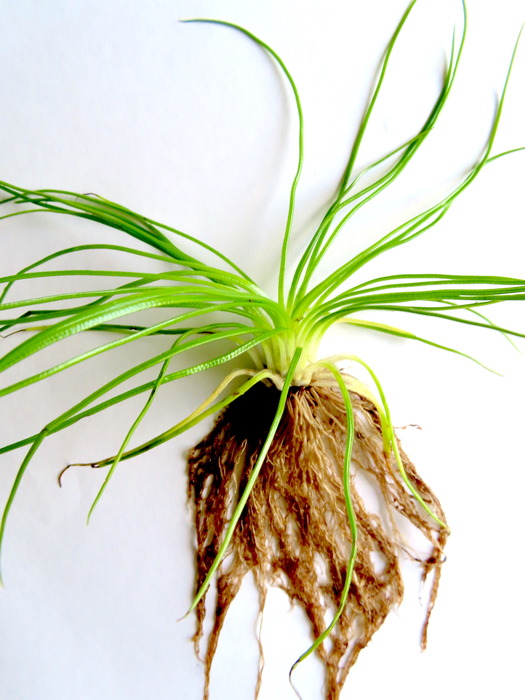ITHACA, NY, November 3, 2021 —

Credit: Yao-Moan Huang
ITHACA, NY, November 3, 2021 —
The humble quillworts are an ancient group of about 250 small, aquatic plants that have largely been ignored by modern botanists. A group of researchers, led by Boyce Thompson Institute’s Fay-Wei Li, have sequenced the first quillwort genome and uncovered some secrets of the plant’s unique method of photosynthesis – secrets that could eventually lead to the engineering of crops with more efficient use of water and carbon dioxide.
Most plants breathe in carbon dioxide (CO2) and use sunlight to turn the gas into sugar during the day, and then stop breathing when the sun goes down. But plants in arid regions have evolved to breathe in CO2 at night, and then stop breathing during the day while they conduct photosynthesis. This strategy – called CAM photosynthesis – helps the plants save water.
Forty years ago, quillworts — plants of the genus Isoetes — became the first group of aquatic plants discovered to use CAM photosynthesis. Daytime water loss is clearly not a problem for the aquatic plants. Instead, quillworts use CAM to collect CO2 dissolved in water and store it overnight, to avoid competing with other aquatic plants and organisms, such as algae, that deplete water levels of the gas during the daytime.
To investigate the genetic mechanisms regulating quillworts’ CAM photosynthesis process, Li’s team assembled a high-quality genome for I. taiwanensis, and found some similarities between quillwort and land plant CAM photosynthesis, but also a number of differences.
“As aquatic plants, Isoetes have evolved CAM photosynthesis in a fundamentally different environment than terrestrial plants in dry habitats,” says Li, who is also an adjunct assistant professor of plant biology at Cornell University. “These results tell us there are more evolutionary pathways to CAM than we previously thought.”
The findings were published in Nature Communications November 3.
The team used the genome to identify CAM pathway genes and to examine their expression patterns, including how those patterns changed across the day/night cycle. One notable difference between CAM in quillworts and terrestrial plants is in the function of phosphoenolpyruvate carboxylase (PEPC). All plants have two types of PEPC: plant-type, long known for its essential role in photosynthesis; and bacterial-type, which resembles the PEPC found in bacteria.
“In all other plants, bacterial-type PEPC plays a role in a range of metabolic processes but not photosynthesis,” said David Wickell, a Ph.D. student in Li’s laboratory and first author on the study. “In Isoetes, both types appear to be involved in CAM – something that hasn’t been found in any other plant and points to a distinct role for bacterial-type PEPC in aquatic CAM.”
All plants have the multiple components of CAM, which is why the process has evolved so many times, says Li. But aquatic and terrestrial plants recruited different versions of those components possibly to meet the needs imposed by their differing environments.
The team also found that expression levels of a few circadian regulators peaked at different times of day in quillworts than in terrestrial plants, indicating the circadian clock might regulate CAM functions differently in Isoetes.
The team’s next steps include examining CAM gene expression patterns in I. engelmannii (Engelmann’s quillwort), which uses CAM when fully submerged in water and C3 photosynthesis when above water.
Longer term, the findings could be used to engineer crops to withstand environmental stresses. “It would boil down to manipulating the circadian clock genes that regulate CAM components to help plants become more efficient at conserving water or making better use of the available CO2,” said Wickell. “It’s an exciting idea to consider.”
The group’s interest in Isoetes builds on a fantastic research legacy at BTI. The standard reference summarizing the characteristics and habitats of the genus is still Norma Pfeiffer’s Monograph on the Isoetaceae, published in 1922. Pfeiffer was one of BTI’s original scientists when the Institute opened its doors in Yonkers, NY, in 1924. The plant morphologist remained at BTI until she retired in 1955.
The team included researchers from National Tsing Hua University, the University of Göttingen, the Taiwan Forestry Research Institute, the University of Texas at Austin, the University of Arizona, and The Salk Institute for Biological Studies.
The research was supported by funding from BTI, the European Research Council (ERC) and the International Max Planck Research School (IMPRS) for Genome Science.
About Boyce Thompson Institute:
Opened in 1924, Boyce Thompson Institute is a premier life sciences research institution located in Ithaca, New York. BTI scientists conduct investigations into fundamental plant and life sciences research with the goals of increasing food security, improving environmental sustainability in agriculture, and making basic discoveries that will enhance human health. Throughout this work, BTI is committed to inspiring and educating students and to providing advanced training for the next generation of scientists. BTI is an independent nonprofit research institute that is also affiliated with Cornell University. For more information, please visit BTIscience.org.
###
Journal
Nature Communications
DOI
10.1038/s41467-021-26644-7
Method of Research
Experimental study
Subject of Research
Not applicable
Article Title
Underwater CAM photosynthesis elucidated by Isoetes genome
Article Publication Date
3-Nov-2021
COI Statement
The authors declare no competing interests.




